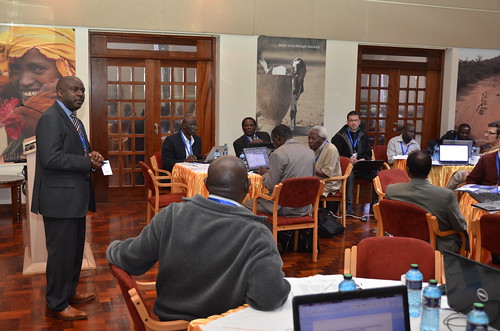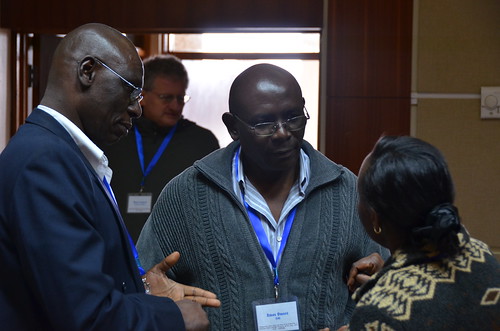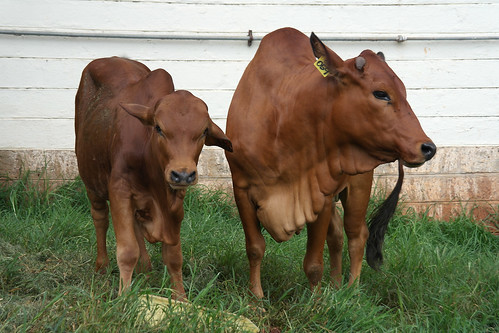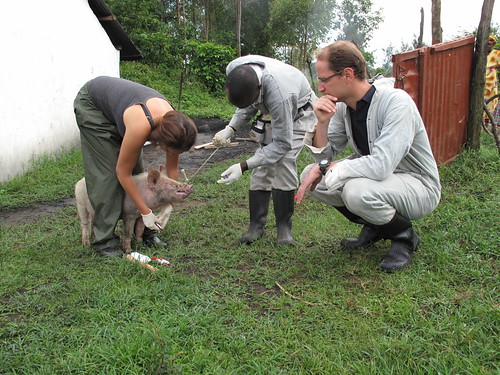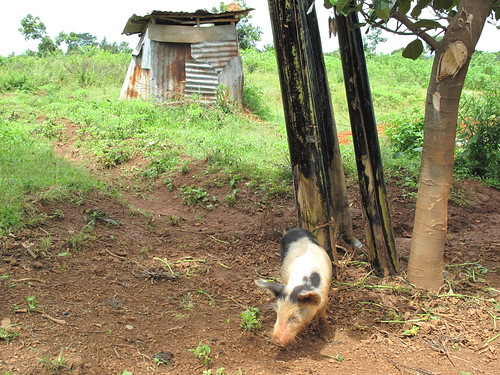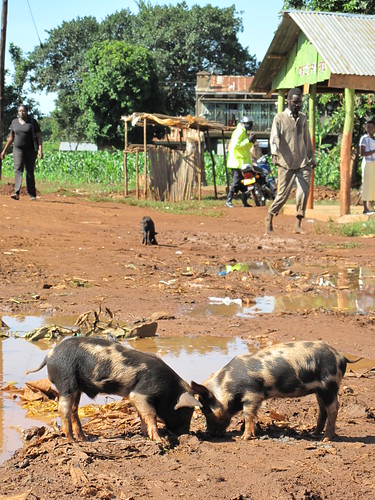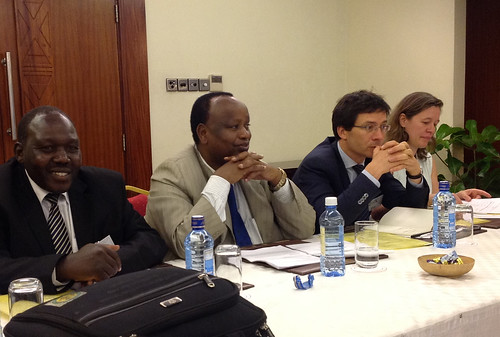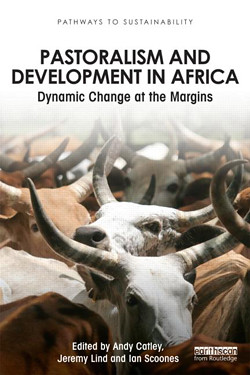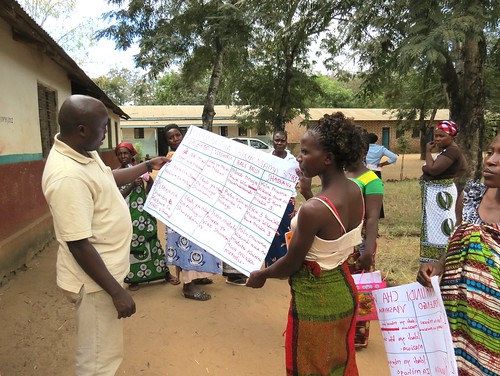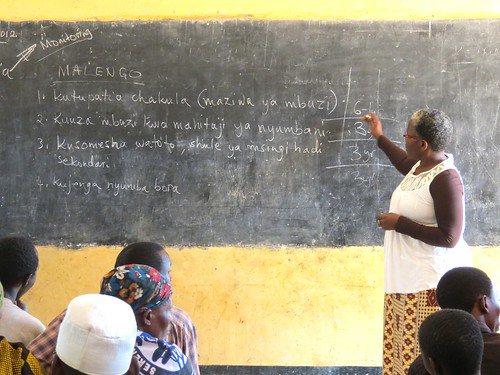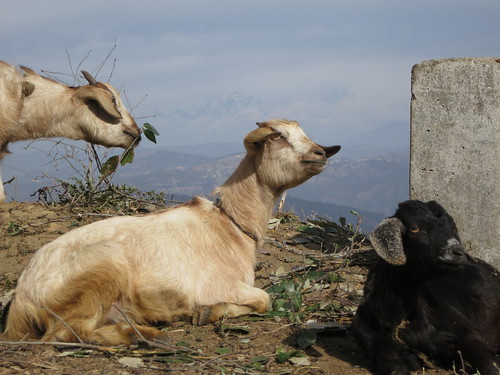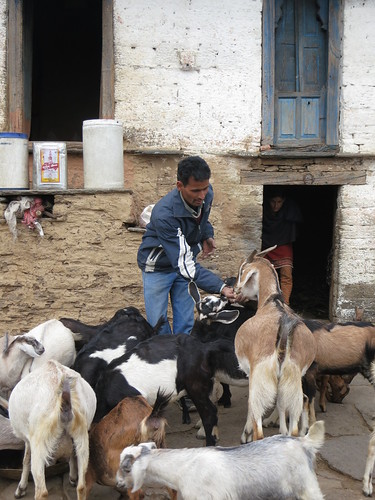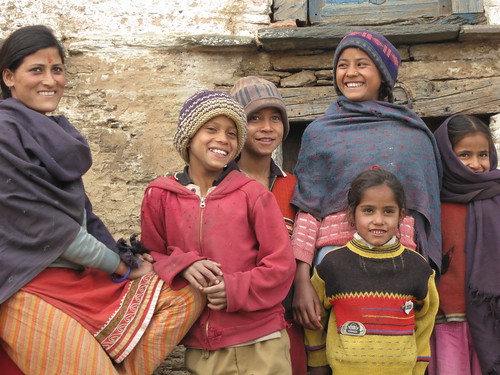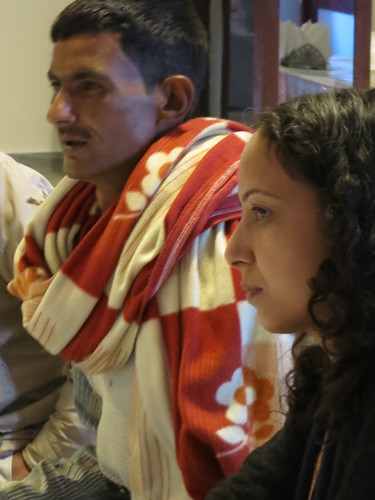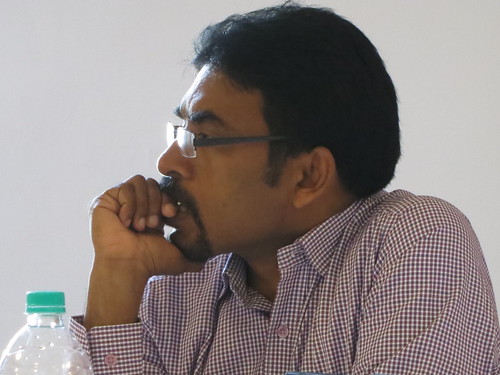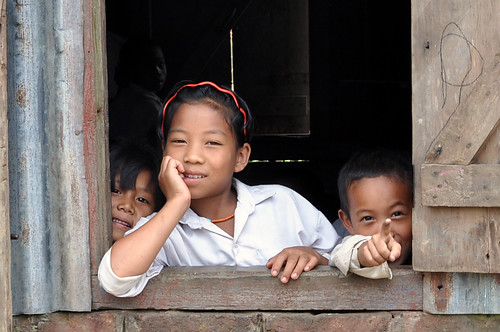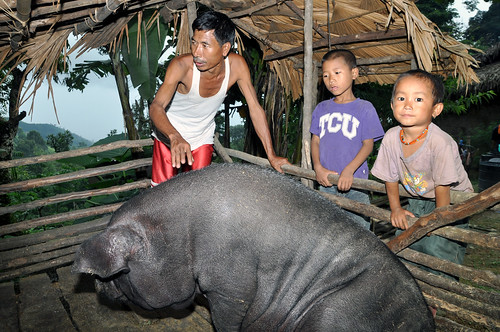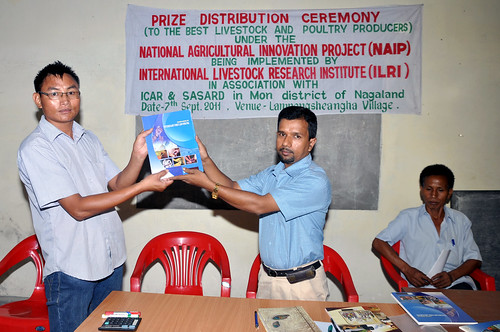This very brief photofilm (1:41 minutes) shares the story of Misku Abafaris, a woman farmer in Ethiopia, who was interviewed in 2010 about the changes in her life as a result of interventions by an ILRI-led Improving Productivity and Market Success of Ethiopian Farmers (IPMS) project. Since 2006, ILRI has been working closely with Ethiopia’s Ministry of Agriculture and Rural Development to improve farmers’ livelihoods.
When asked what life was like a decade ago, Misku Abafaris immediately says: ‘In those days I was never exposed to any new ideas, any new approaches.’ Then, after more consideration, the 40-year old mother of six turns to practical matters. ‘I used to spend most of my time caring for my children and preparing food. And I’d look after our cow and help my husband when the crops needed weeding.’
In short, her daily routine in Gudeta, a small village some 30 minutes’ walk from a tarmac road, was little different from that of earlier generations of women in Ethiopia’s Oromiya Region. There were good years, when the coffee harvest was plentiful, and bad years, when the coffee failed or drought shrivelled their food crops.
Five of Misku’s children still live at home, chickens still wander in and out of their mud-walled, tin-roofed dwelling, and it’s still a long walk to the nearest well to get drinking water. But new ideas and new approaches, so lacking in the past, have recently helped to transform their lives. Their most obvious manifestation can be seen in the fields below the village, where half a dozen handsome sheep are being fattened for the market.
‘With the profits I’ve made from my sheep, I’ve been able to buy a Boran heifer, which will yield much more milk than our local breed of cow’, says Misku, ‘and last year, when we didn’t get a coffee harvest, we still made enough money from the sheep to pay all our household expenses.’ She’s particularly proud of the fact that her sheep-fattening business has paid for her eldest daughter, now 21 years old, to live and study in the nearby town of Agora.
Misku’s forgotten to tell you about the chairs we’re sitting on’, says Abafaris Abamaliky, her husband. ‘It was the money from the sheep that paid for the timber and the carpentry. And it paid for the wooden box where I now keep my clothes and my private things.’ The pride he takes in his wife’s achievement is plain to see.
The power of knowledge
Misku and her husband are among tens of thousands of farmers to benefit from a project which has helped them to improve the productivity of their livestock and crops and—crucially—market their produce more effectively. Funded by the Canadian International Development Agency (CIDA) and managed by the International Livestock Research Institute (ILRI) on behalf of the Ministry of Agriculture and Rural Development, the Improving Productivity and Market Success of Ethiopian Farmers (IPMS) project was launched in 2006.
Goma, where Misku and her family live, is one of 10 districts where the project operates. The early stages involved the identification of crops and livestock which could benefit from activities to improve production and marketing. This followed lengthy consultations with farmers and local government staff. In Goma the focus has been on improving ‘value chains’—linking production, the supply of farm inputs and the markets—for coffee, poultry, honey, fruit and sheep.
‘Many farmers were keen to develop sheep fattening, but they didn’t have the knowledge or skills to improve production’, explains Yisehak Baredo, the project’s research and development officer in Goma. ‘Their sheep were in poor health, and it took them up to a year to fatten them.’ Misku’s experience was typical: she used to keep just one sheep, whose only food supplement was kitchen scraps, and she made hardly any money fattening its lambs.
In 2008, the project provided training on sheep fattening for Misku and 119 other farmers. They learned, among other things, about the importance of providing their animals with protein-rich food supplements and how to keep them in good health. Such was the success of the first training program that the project repeated the exercise for 92 farmers a year later.
None of this would have been possible without access to credit, which was provided through a local microfinance institution. Talk to any of the farmers who benefited and they’ll tell you in great detail precisely how they spent their first loans.
Misku borrowed 1500 birr (USD115). With this she bought five young sheep, a supply of cotton-seed meal, life insurance for herself and insurance for her five sheep, and de-wormers and other veterinary medicines. Three months later, she sold the fattened sheep and paid back the loan, leaving her a net profit of 1200 birr (USD90)—a considerable sum of money in one of the poorest countries in the world. Subsequent fattening cycles have provided her with similar profit margins.
So is her story unusual? Yes and no. Yes, in the sense that she is a strong and respected leader, and the group of 30 smallholders which she chairs was immediately able to repay its loans in full—something several other groups failed to achieve. As a result, the microfinance institution has been happy to provide further loans. And no, in the sense that many other farmers have made a success of fattening their sheep and increasing their income. Over four out of five who received training shortened the fattening period to just three months.
‘With the profits I’ve made from the sheep, we’ve built an extension to our house and bought a high-yielding Boran cow’, says Suchare Abamaliky, one of Misku’s neighbours. Musa Kadir, who belongs to the same peasant association, has used the profits from his sheep to pay school fees for his children. ‘I’m now earning as much money in three months as I used to make in a year from the sale of coffee beans’, he says. He has ambitious plans to expand the number of sheep he fattens, and he’s also begun to raise avocado and mango seedlings, having observed the activities of one of his neighbours. Shito Nasir had received training on how to graft superior varieties of fruit tree. ‘I could see she was making such a good business that I decided to do the same’, explains Musa Kadir. This is the way new ideas are beginning to spread, across hedges and fields from farmer to farmer.
A rural revolution?
Abafaris Abamaliky is some 20 years older than his wife, Misku, and he has lived, as he puts it, through three governments. Life is now better than it ever was in the past, he says. ‘We now have electric light in the village and better health care.’ Just as importantly, he and his neighbours now feel they can talk openly to government officials. Indeed, the success of the IPMS project owes much to the close relationship between villagers and the staff at the district offices of the Ministry of Agriculture and Rural Development.
Besides introducing new technologies to Ethiopian farmers, the project has begun to change the way government staff approach agricultural development. ‘Before the project began, we used to focus on increasing the production of particular commodities, but we knew nothing about value chains’, explains Tanashe Eyasu at the local Office of Agriculture and Rural Development. ‘Now, we’re changing the way we work, and we’re linking producers with suppliers of inputs like fertilizers and feed, and sometimes even linking them with buyers as far away as Addis Ababa.’
Although the IPMS project will come to an end at the end of this year (2012), its impact is assured. ‘You can already see the knowledge being transmitted from farmer to farmer’, says Tsegaye Umeta, Goma’s district administrator, ‘and local government staff will continue to promote the knowledge and practices introduced by IPMS to new areas.’ It shouldn’t be a hard sell: when farmers are making good money, others will follow where they lead. And already, new businesses have sprung up to provide feed, fertilisers, medicines, beehives and other equipment.
If you ask Misku about her hopes for the future, she lists her priorities without hesitation. ‘My first desire is to support my children, so they can go to college’, she says. ‘Then, if God is willing, I would like a better house, with a cement floor, not a mud floor like this one, and with brick walls painted a nice colour. I’d also like a well.’ A while ago, she went on a farmers’ study trip to the capital, where she saw a small pump for drawing well water. ‘I’d like that too’, she says.
But is this a dream too far for a family which has just three hectares of land, a pair of oxen, two cows, ten chickens and a small flock of sheep? ‘No’, she replies. ‘If we continue to work hard, I’m sure this will happen.’ Her husband nods in agreement.
As we leave the village, we are accompanied by a chattering crowd of children, including Misku’s eight-year-old boy. When Ariso is not at school, he helps to look after the family’s sheep, but he also has a lamb of his own, which he recently bought with money he earned picking coffee.
‘Once I have fattened it up’, he says, ‘I will make a good profit.’ He probably hasn’t heard of ‘value chains’, but he is very much his mother’s son: he understands the importance of the market.
Story and photofilm by Charlie Pye-Smith.
Download publications from the Improving Productivity and Market Success of Ethiopian Farmers project: http://cgspace.cgiar.org/handle/10568/262
Read and view other stories/photofilms by Charlie Pye-Smith:
1 Gebremichael’s story: Changing the fortunes of farmers in Ethiopia through better livestock feed, 28 May 2012 (story and photofilm).
2 Saving the plains: ILRI research team wins Sustainability Science Award for its pastoral research in Masailand, 7 Jun 2012 (story).
3 The connection between animal disease and human health, 13 Jan 2012 (photofilm).

